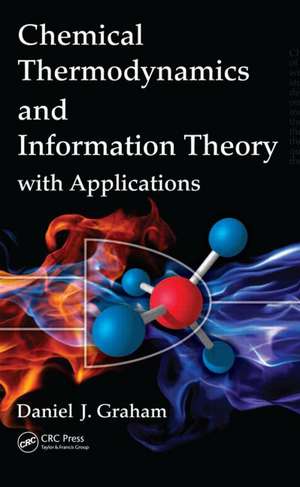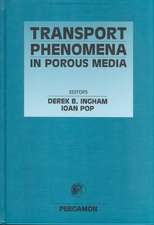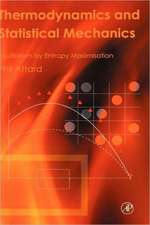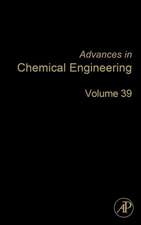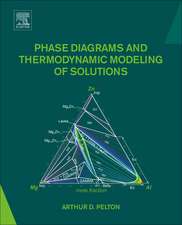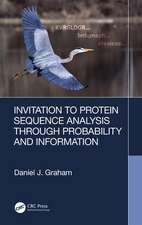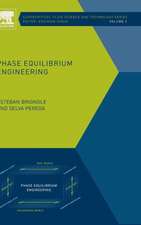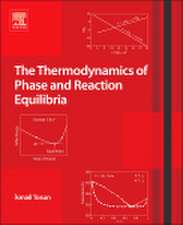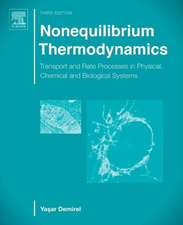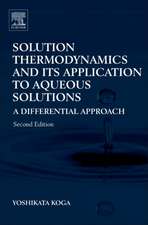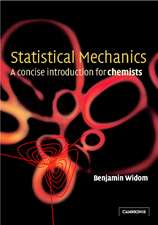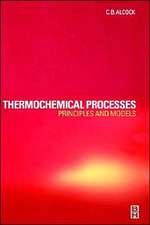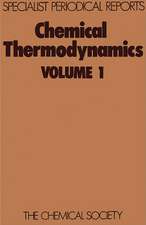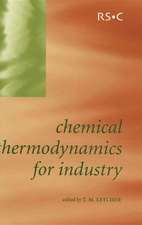Chemical Thermodynamics and Information Theory with Applications
Autor Daniel J. Grahamen Limba Engleză Hardback – 7 iun 2011
In an approach that intertwines information science and chemistry, this book covers:
- The informational aspects of thermodynamic state equations
- The algorithmic aspects of transformations—compression, expansion, cyclic, and more
- The principles of best-practice programming
- How molecules transmit and modify information via collisions and chemical reactions
Preț: 783.25 lei
Preț vechi: 955.17 lei
-18% Nou
Puncte Express: 1175
Preț estimativ în valută:
149.89€ • 155.60$ • 124.99£
149.89€ • 155.60$ • 124.99£
Carte tipărită la comandă
Livrare economică 22 martie-05 aprilie
Preluare comenzi: 021 569.72.76
Specificații
ISBN-13: 9781439820872
ISBN-10: 1439820872
Pagini: 240
Ilustrații: Approx. 480 to 525 equations.; 10 Tables, black and white; 115 Illustrations, black and white
Dimensiuni: 156 x 234 x 19 mm
Greutate: 0.48 kg
Ediția:1
Editura: CRC Press
Colecția CRC Press
ISBN-10: 1439820872
Pagini: 240
Ilustrații: Approx. 480 to 525 equations.; 10 Tables, black and white; 115 Illustrations, black and white
Dimensiuni: 156 x 234 x 19 mm
Greutate: 0.48 kg
Ediția:1
Editura: CRC Press
Colecția CRC Press
Public țintă
Chemistry and biology students with an interest in thermodynamics, molecules, and computation; instructors in physical chemistry; practitioners in physical and organic chemistry fields, including those with an interest in QSAR; university and industrial chemistry libraries.Cuprins
Information in Thermodynamics and Chemistry. Countable States, Distribution Functions, and Information. Heat, Work, and Information. Transformation Pathways. Economical Pathways. Information, Thermochemistry, and Molecules. Transforming a Molecule's Information. New Horizons.
Notă biografică
Daniel J. Graham is with the Department of Chemistry at Loyola University in Chicago.
Descriere
In an approach that intertwines information science and chemistry, this book covers the informational aspects of thermodynamic state equations, the algorithmic aspects of transformations, the principles of best-practice programming, and how molecules transmit and modify information via collisions and chemical reactions. Using examples from physical and organic chemistry, it demonstrates how the disciplines of thermodynamics and information theory are intertwined. The book provides a fresh perspective on time-honored subjects such as state transformations, heat and work exchanges, and chemical reactions.
